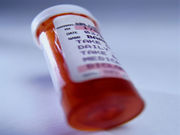First-in-class drugs are fast-tracked while follow-on drugs can take up to 15 years to be approved
WEDNESDAY, Jan. 11, 2017 (HealthDay News) — The excessive regulatory regime at the U.S. Food and Drug Administration is an important driver of high drug prices, and should be curbed to introduce more competition and lower prices, according to a report published online Jan. 5 by the National Center for Policy Analysis.
In the report, Devon Herrick, from the National Center for Policy Analysis discusses rising drug costs and ways to reduce the costs of drugs.
Herrick notes that the excessive regulatory regimen at the FDA is an important driver of high drug prices, and that a more rational path to drug approval is needed to boost competition and contain drug prices. The FDA has fast-tracked approval of new, first-in-class drugs while follow-on drugs can take up to 15 years to research, develop, and obtain approval due to regulatory barriers. Introducing drug competition can reduce prices considerably: The average generic price is halved when there are two competing generics in a drug class. In response to increased public scrutiny in relation to the high prices of drugs in 2016, drug companies blamed the “middleman,” which is actually the industry supply chain, from drug makers, wholesalers, and pharmacies, through drug benefit plans.
“A way to rein-in high drug prices is to inject more competition,” Herrick writes. “Newer drugs would face numerous competitors if it didn’t require years and cost $1 billion or more to bring a new product to market.”
Copyright © 2017 HealthDay. All rights reserved.








